1. What is the Metaverse and How Can it Transform Industry Conferences?
What is the Metaverse?
The concept of the Metaverse has rapidly gained popularity in recent years. The Metaverse refers to a virtual reality environment where users can interact with a computer-generated world and other users in real-time. It can be considered as an immersive form of the internet, blurring the lines between the physical and digital worlds.
In the Metaverse, users can create avatars, explore virtual landscapes, and engage in various activities such as gaming, shopping, socializing, and attending virtual events. It offers a whole new level of immersion and interactivity that traditional online platforms cannot match.
Benefits of the Metaverse for Industry Conferences
The impact of the Metaverse on industry conferences cannot be understated. It has the potential to revolutionize the way events are conducted, offering numerous benefits for both organizers and attendees.
One of the main advantages is the accessibility it provides. With the Metaverse, conferences can be attended from any location in the world, eliminating the need for travel and reducing costs. This opens up opportunities for a global audience to participate, fostering greater diversity and inclusivity.
Furthermore, the Metaverse offers a highly engaging and immersive experience. Attendees can interact with virtual booths, explore personalized content, and network with other participants in real-time. This enhances the overall conference experience, making it more interactive, memorable, and enjoyable.
Practical Applications of the Metaverse in Conference Settings
The Metaverse can be utilized in a variety of ways to transform industry conferences. Here are a few practical applications:
Virtual Exhibitions:
- The Metaverse enables the creation of virtual exhibition halls where companies can showcase their products and services.
- Attendees can explore these virtual booths, interact with 3D models, watch product demos, and even make purchases.
- Virtual exhibitions are not bound by physical limitations, allowing for greater creativity in booth design and layout.
Networking Opportunities:
- The Metaverse facilitates networking by providing virtual spaces for participants to connect and interact.
- Attendees can engage in conversations, exchange contact information, and collaborate on projects.
- This eliminates the constraints of physical proximity and time, allowing for more meaningful connections.
Immersive Presentations and Workshops:
- The Metaverse offers the ability to create immersive presentations and workshops.
- Speakers can use interactive elements, virtual demonstrations, and 3D visualizations to enhance their content.
- Attendees can actively engage with the material, ask questions, and participate in hands-on activities.
The potential of the Metaverse to transform industry conferences is immense. Its accessibility, interactivity, and immersive nature offer a new dimension to traditional event formats. As the technology continues to advance, we can expect to see more exciting developments and innovative use cases in the future.
2. The Role of Virtual Reality (VR) in Building the Metaverse for Industry Conferences
The Role of Virtual Reality (VR) in Building the Metaverse for Industry Conferences
Virtual Reality (VR) technology has revolutionized the way we perceive and experience the world around us. With its immersive capabilities, VR has found its way into various sectors, including industry conferences. It is transforming the way attendees and participants engage with content, creating opportunities for more interactive and dynamic event experiences.
One of the key advantages of VR in the context of industry conferences is its ability to transport participants to virtual environments that replicate real-world conference settings. This means that delegates can attend conferences from the comfort of their homes or offices, eliminating the need for physical travel. With VR headsets, participants can virtually enter conference halls, exhibition floors, and even network with other attendees.
Enhancing Engagement and Networking
VR technology allows for enhanced engagement and networking opportunities at industry conferences. Attendees can interact with virtual booths and exhibits, exploring products and services in a fully immersive manner. In addition, VR platforms provide features like virtual chat rooms and meeting spaces, allowing participants to connect and network with like-minded individuals from all over the world. This not only expands networking possibilities but also breaks down geographical barriers, enabling a more inclusive conference experience.
Furthermore, VR can facilitate live sessions and presentations, with participants having the ability to ask questions and interact with speakers in real-time. This level of interactivity fosters a more engaging and memorable learning experience, making industry conferences more valuable to attendees.
Cost Savings and Environmental Impact
A significant advantage of incorporating VR into industry conferences is the potential for cost savings. Traditional conferences involve expenses related to venue rentals, travel, accommodation, and catering. By transitioning to virtual conferences, organizers can significantly reduce these costs, making industry events more accessible and affordable for both attendees and exhibitors.
Additionally, the environmental impact of physical conferences, such as increased carbon emissions from travel, can be mitigated by adopting VR technology. By reducing the need for travel and eliminating the associated carbon footprint, VR can contribute to more sustainable conference practices, aligning with the growing focus on environmental responsibility.
In conclusion, virtual reality is playing an increasingly important role in building the metaverse for industry conferences. It offers unparalleled opportunities for engagement, networking, and cost savings. As technology continues to evolve, VR will undoubtedly shape the future of conferences, providing innovative and inclusive experiences for attendees worldwide.
3. Exploring Applications of the Metaverse in Industry-Specific Conferences
In recent years, the concept of the metaverse has garnered significant attention and captured the imagination of many. Defined as a virtual reality space where users can interact with a computer-generated environment and other participants, the metaverse offers numerous possibilities for various industries. One area that stands to benefit greatly from this technology is industry-specific conferences.
Industry-specific conferences play a crucial role in bringing professionals together to exchange knowledge, network, and showcase innovations. However, traditional conferences often come with logistical challenges and limitations, such as travel expenses, limited attendance capacities, and a lack of interactivity. This is where the metaverse comes in, offering a solution that can revolutionize the conference experience.
By leveraging the metaverse, industry-specific conferences can overcome geographical barriers and expand their reach to a global audience. Participants from different corners of the world can come together in a virtual space, breaking down the limitations of physical boundaries. This allows for increased diversity and inclusivity, providing a platform for more voices to be heard and perspectives to be shared.
Moreover, the metaverse provides a unique opportunity for conference organizers to create highly interactive and immersive environments. Attendees can explore virtual exhibition halls, engage with virtual products and services, and even interact with realistic avatars of industry experts. This level of interactivity enhances the overall conference experience, fostering engagement and creating memorable moments for participants.
Another advantage of the metaverse in industry-specific conferences is the potential for cost-saving and reduced environmental impact. With virtual conferences, there is no need for participants to travel, book accommodations, or print marketing materials. This not only saves money but also reduces carbon emissions associated with transportation and physical waste. By embracing the metaverse, conferences can align with sustainability goals while still providing valuable networking and educational opportunities.
In conclusion, the metaverse holds immense potential for industry-specific conferences. It offers a solution to the logistical limitations of traditional conferences by enabling global participation, fostering interactivity, and reducing costs. As technology continues to advance, it is crucial for conference organizers to explore the applications of the metaverse and tap into its benefits. By embracing this virtual reality space, industry-specific conferences can evolve and adapt to the changing landscape, ensuring the continued growth and relevance of these important events.
4. Overcoming Challenges: Implementing the Metaverse in Industry Conferences
4. Overcoming Challenges: Implementing the Metaverse in Industry Conferences
The metaverse has emerged as a groundbreaking concept that is rapidly gaining attention in the tech industry. With its potential to create immersive, interactive virtual worlds, many organizations are exploring ways to integrate the metaverse into industry conferences. However, this implementation is not without its challenges. In this article, we will delve into the key obstacles faced when incorporating the metaverse into industry conferences and discuss strategies to overcome them.
The Technical Hurdles
One of the major challenges of bringing the metaverse to industry conferences is the technical complexity involved. The metaverse relies on cutting-edge technologies such as virtual reality (VR), augmented reality (AR), and blockchain. Implementing these technologies seamlessly requires a significant investment in infrastructure and expertise.
Conference organizers must ensure that attendees have access to the necessary VR and AR devices to fully experience the metaverse. Additionally, developing secure and scalable blockchain solutions for ticketing, networking, and digital asset management presents its own set of technical hurdles.
To overcome these challenges, conference organizers should collaborate with technology partners who specialize in metaverse integration. By leveraging their expertise and resources, organizations can navigate the technical complexities and create a seamless metaverse experience for attendees.
Engaging Attendees in the Metaverse
Integrating the metaverse into industry conferences is not only about providing a cutting-edge technology experience but also about engaging attendees effectively. Keeping participants immersed and connected in the virtual world requires careful planning and execution.
One challenge is ensuring that attendees actively participate and contribute to the virtual conference environment. In traditional conferences, networking and interaction occur naturally, but in the metaverse, it requires deliberate facilitation. Conference organizers can overcome this challenge by incorporating interactive features such as virtual exhibitions, networking lounges, and gamified experiences.
Moreover, the metaverse presents an opportunity to elevate the conference experience by offering features like live 3D presentations, personalized avatars, and real-time collaborative tools. By providing these immersive and engaging elements, organizations can create a truly interactive environment, enhancing attendee participation and making the metaverse conference experience memorable.
The Accessibility Barrier
While the metaverse brings exciting possibilities, it also poses accessibility barriers that need to be addressed. Attendees may face limitations due to inadequate access to high-speed internet, lack of VR/AR devices, or technical knowledge gaps. Overcoming these barriers is essential to ensure inclusivity and maximum participation in metaverse-enabled industry conferences.
Conference organizers can bridge the accessibility gap by providing on-site VR/AR devices for attendees to use or partnering with local VR/AR facilities to offer accessible resources. Additionally, offering comprehensive tutorials and technical support before and during the conference can help attendees overcome the knowledge gaps and make the most of the metaverse experience.
To conclude, implementing the metaverse in industry conferences brings numerous possibilities but also presents challenges. Overcoming the technical hurdles, engaging attendees effectively, and addressing accessibility barriers are key steps towards a successful integration. By embracing these challenges head-on and prioritizing collaboration with technology partners, conference organizers can unlock the full potential of the metaverse and revolutionize the way industry conferences are conducted.
5. Best Practices for Organizing a Successful Metaverse Conference
In today’s digital age, the concept of a metaverse conference has gained immense popularity. With advancements in technology, virtual conferences have become a new norm in the business world. However, successfully organizing a metaverse conference requires careful planning and execution. In this article, we will discuss some best practices that can help you organize a successful metaverse conference.
Create a Clear Event Objective
Before diving into the details of organizing a metaverse conference, it is crucial to define your event objective. Set clear goals and objectives that align with your organization’s mission and target audience. Whether your aim is to generate leads, promote thought leadership, or foster networking opportunities, having a well-defined objective will guide your planning process.
Choose the Right Platform
Selecting the right virtual platform for your metaverse conference is paramount to its success. Conduct thorough research to find a platform that offers features like 3D environments, customizable avatars, and interactive networking tools. Look for a platform that provides immersive experiences and allows seamless integration of multimedia content. By choosing the right platform, you can create a memorable and engaging event for your attendees.
Engage Your Audience
Keeping your audience engaged throughout the conference is crucial. Incorporate interactive elements such as live Q&A sessions, polls, and breakout rooms to encourage participation. Leverage technology to create networking opportunities by facilitating virtual one-on-one meetings or group discussions. Additionally, consider incorporating gamification elements like leaderboards or virtual treasure hunts to make the experience more enjoyable and rewarding for your attendees.
Provide Valuable Content
To ensure a successful metaverse conference, provide valuable content that resonates with your audience. Invite industry experts as speakers and panelists who can deliver insightful presentations and discussions. Offer a diverse range of topics and sessions that cater to the interests and needs of your attendees. Consider providing post-event resources like recorded sessions or presentation materials to enhance the value of the conference and extend its reach beyond the event itself.
By following these best practices, you can organize a successful metaverse conference that not only meets your objectives but also creates a memorable experience for your attendees. Remember to thoroughly plan each aspect of the conference, from choosing the right platform to creating engaging content. Embrace the opportunities that virtual conferences offer and leverage technology to deliver an immersive and enjoyable experience for all participants.
6. The Future of Industry Conferences: The Metaverse as a Long-term Solution
The digital revolution has changed the way we live, work, and connect with each other. Industries have evolved to adapt to new technologies, and the events industry is no exception. As we enter the age of the metaverse, industry conferences are set to undergo a transformation like never before. The metaverse, a virtual world where users can interact with each other and digital content in real-time, is emerging as a long-term solution for industry conferences.
One of the key advantages of the metaverse is its ability to overcome geographical limitations. Traditional industry conferences often require participants to travel long distances to attend in-person. This not only adds to the cost but also limits the number of people who can participate. However, with the metaverse, conference attendees can join from anywhere in the world, eliminating the need for physical travel. This opens up opportunities for global participation, fostering collaboration and knowledge sharing among professionals from diverse backgrounds.
Additionally, the metaverse offers a highly immersive and engaging experience for conference participants. Imagine attending a conference where you can explore interactive virtual booths, attend live presentations, and network with other attendees, all from the comfort of your own home. The metaverse brings a new dimension to industry conferences, making them more dynamic and interactive than ever before. Through the use of virtual reality (VR) and augmented reality (AR) technologies, attendees can have a lifelike conference experience, almost as if they were physically present.
Furthermore, the metaverse provides a unique platform for showcasing products and services. In a traditional conference setting, exhibitors have limited space to display their offerings, and it can be challenging for attendees to visit every booth. However, in the metaverse, exhibitors can create virtual showrooms with interactive displays and demonstrations. Attendees can easily navigate through these virtual spaces, exploring products and services in detail. This not only enhances the exhibitor’s visibility but also enables attendees to make more informed decisions based on their specific needs.
In conclusion, the metaverse holds immense potential as a long-term solution for industry conferences. Its ability to overcome geographical limitations, provide immersive experiences, and offer unique showcasing opportunities makes it an ideal platform for the future of conferences. As technology continues to advance, the metaverse is expected to become more sophisticated, further enhancing the conference experience. Industry professionals and event organizers should embrace this emerging technology to stay ahead of the curve and deliver exceptional conference experiences for participants worldwide.
7. Exploring Alternatives: Pros and Cons of the Metaverse vs. Traditional Conference Formats
Introduction
The ever-evolving landscape of technology has ushered in new possibilities for the way we interact, communicate, and even attend conferences. As the world adjusts to the digital era, the concept of the metaverse has gained significant attention. In this article, we will delve into the pros and cons of the metaverse as compared to traditional conference formats. Understanding the potential benefits and drawbacks of both options can guide individuals and organizations in making informed decisions about how they engage in conferences.
Pros of the Metaverse
One of the primary advantages of the metaverse is its ability to overcome geographical limitations. Traditional conferences often require significant travel, expenses, and logistics. On the other hand, the metaverse enables individuals from different parts of the world to gather virtually, diminishing the need for physical presence. This accessibility factor helps save time, costs, and reduces carbon emissions associated with travel.
Additionally, the metaverse offers unparalleled flexibility. Attendees can navigate through virtual environments, exploring various conference spaces, booths, and networking opportunities. With customizable avatars, individuals can represent themselves creatively and engage with others on a personal level, blurring the barriers of distance. Moreover, the metaverse allows for asynchronous participation, accommodating people in different time zones and reducing scheduling conflicts.
Cons of the Metaverse
While the metaverse presents exciting possibilities, it comes with its drawbacks. One of the concerns revolves around the potential loss of human connection. Traditional conference formats foster face-to-face interactions, enabling participants to build relationships, read body language, and gauge the authenticity of others. The metaverse, although immersive, may lack the same level of interpersonal connection, potentially hindering the organic exchange of ideas and collaborations.
Moreover, the metaverse relies heavily on internet connectivity. Technical issues, such as lag or connection disruptions, can interrupt the flow of presentations or conversations, leading to frustration and decreased engagement. Accessibility to reliable internet infrastructure also poses a challenge in certain regions, limiting the inclusivity and reach of the metaverse as a conference platform.
In addition, the metaverse demands a certain level of digital literacy. Participants unfamiliar with the technology may face a learning curve, potentially limiting the adoption of the metaverse as a viable conference alternative. It is crucial to consider the technological proficiency of your target audience before fully embracing the metaverse as a conference format.
Conclusion
Considering the pros and cons of the metaverse and traditional conference formats is essential in determining the most suitable approach for your conference needs. The metaverse offers unparalleled accessibility, flexibility, and immersive experiences. However, potential disadvantages include the risk of diminished human connection, technical issues, and the requirement of digital literacy. As the metaverse continues to evolve, addressing these concerns and integrating best practices can unlock the full potential of this emerging conference format. It is important to weigh these factors and make informed decisions to ensure meaningful and productive conference experiences in the digital age.

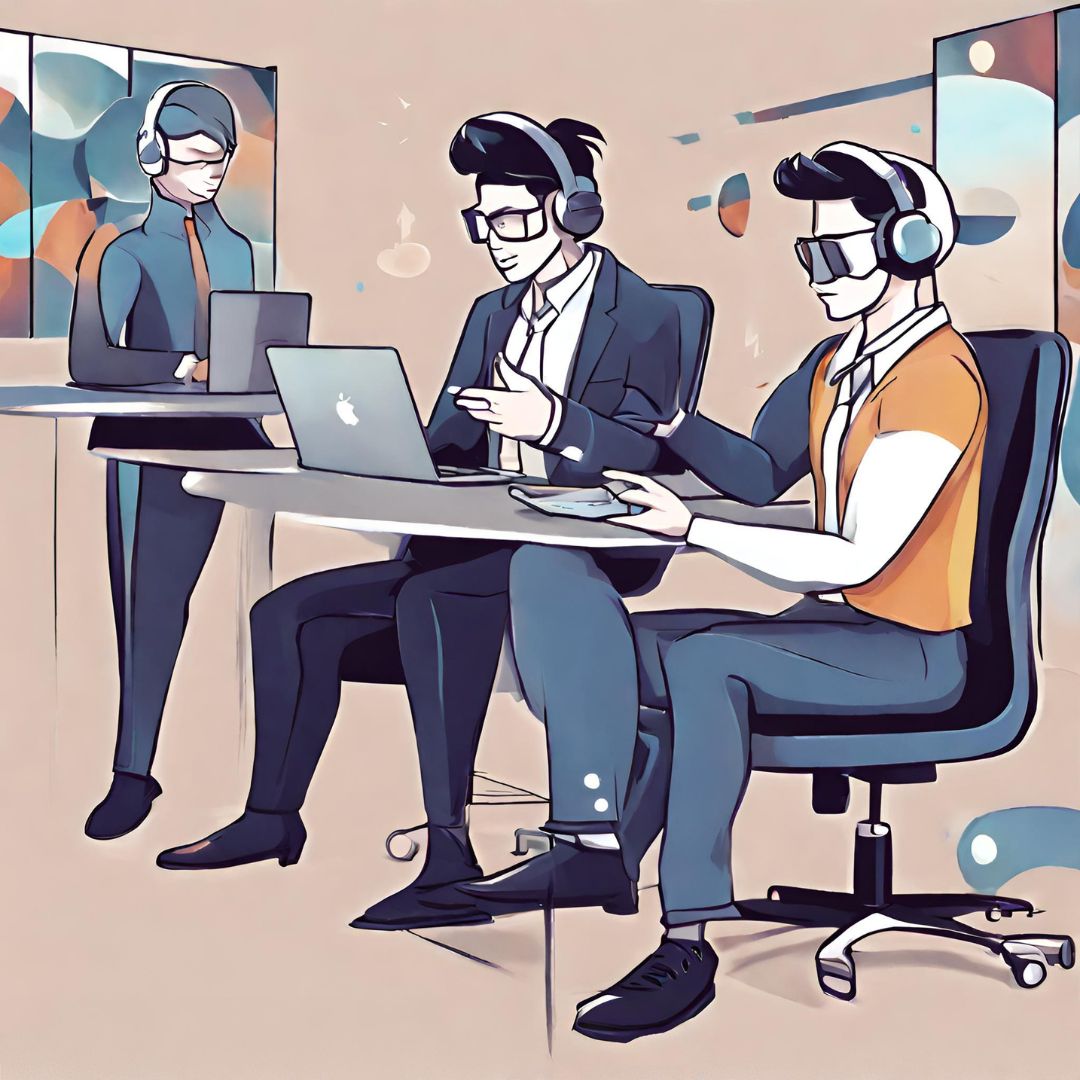

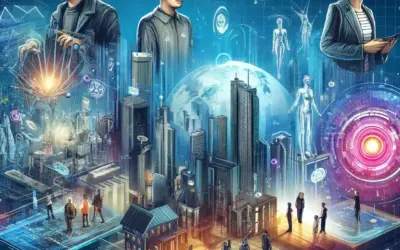

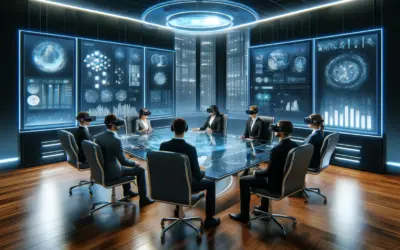

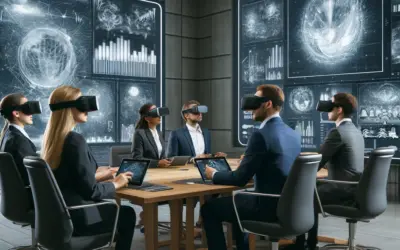

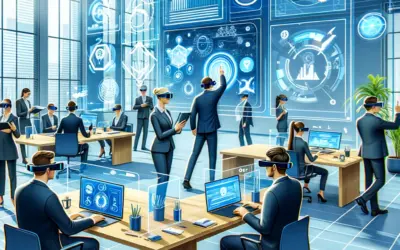



0 comentarios